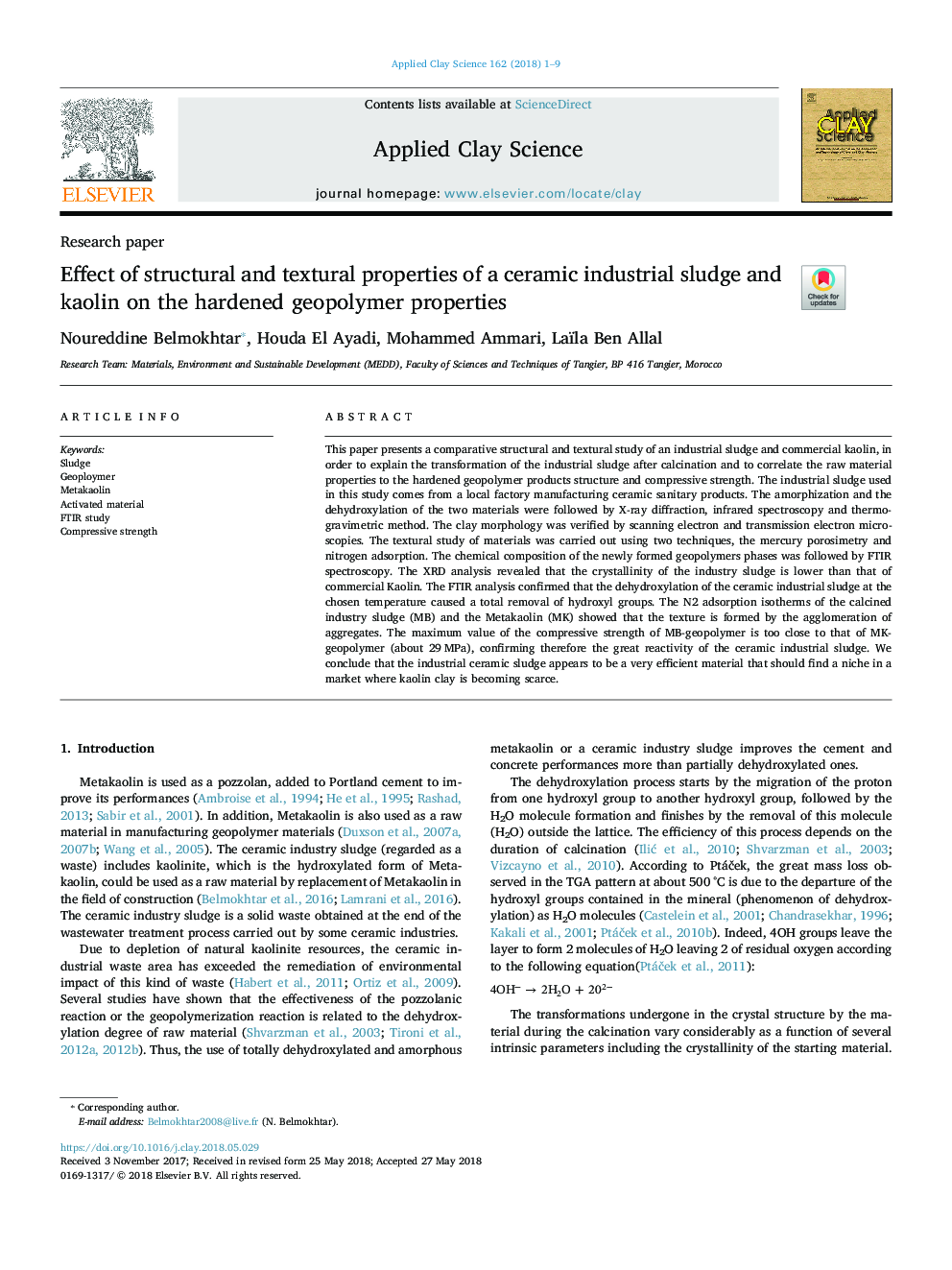| Article ID | Journal | Published Year | Pages | File Type |
|---|---|---|---|---|
| 8045601 | Applied Clay Science | 2018 | 9 Pages |
Abstract
This paper presents a comparative structural and textural study of an industrial sludge and commercial kaolin, in order to explain the transformation of the industrial sludge after calcination and to correlate the raw material properties to the hardened geopolymer products structure and compressive strength. The industrial sludge used in this study comes from a local factory manufacturing ceramic sanitary products. The amorphization and the dehydroxylation of the two materials were followed by X-ray diffraction, infrared spectroscopy and thermogravimetric method. The clay morphology was verified by scanning electron and transmission electron microscopies. The textural study of materials was carried out using two techniques, the mercury porosimetry and nitrogen adsorption. The chemical composition of the newly formed geopolymers phases was followed by FTIR spectroscopy. The XRD analysis revealed that the crystallinity of the industry sludge is lower than that of commercial Kaolin. The FTIR analysis confirmed that the dehydroxylation of the ceramic industrial sludge at the chosen temperature caused a total removal of hydroxyl groups. The N2 adsorption isotherms of the calcined industry sludge (MB) and the Metakaolin (MK) showed that the texture is formed by the agglomeration of aggregates. The maximum value of the compressive strength of MB-geopolymer is too close to that of MK-geopolymer (about 29â¯MPa), confirming therefore the great reactivity of the ceramic industrial sludge. We conclude that the industrial ceramic sludge appears to be a very efficient material that should find a niche in a market where kaolin clay is becoming scarce.
Related Topics
Physical Sciences and Engineering
Earth and Planetary Sciences
Geochemistry and Petrology
Authors
Noureddine Belmokhtar, Houda El Ayadi, Mohammed Ammari, Laïla Ben Allal,
